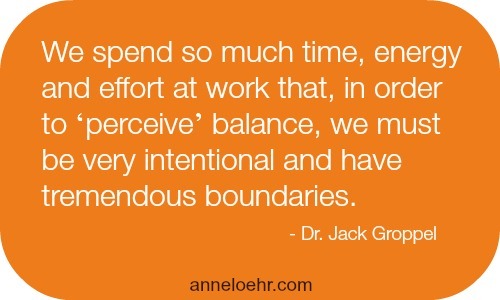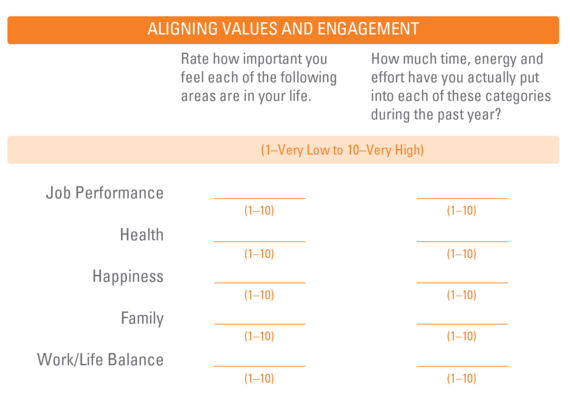My co-authors and I recently posted "Energy: The Leaders Edge", where Dr. Jack Groppel (co-founder of the Johnson & Johnson Human Performance Institute), Tom Ward (founder of TNL Ltd.) and I make the case that being at your best as a leader comes from the capacity to be fully engaged. To cultivate The Leader's Edge, we argue that learning to manage your most precious human resource, energy, is critical.
We believe leadership, both personal and professional, is fueled by energy. We also believe business leaders can benefit by learning to train like elite athletes to manage their energy -- regularly and on purpose physically, emotionally, mentally and spiritually.
In this post, the last in this series, we delve into what it takes to "grow muscle" -- or to develop the capacity to take on challenges that are beyond our current reach. I'm going to share a client situation (please note: identity and circumstance information have been changed to protect privacy) and Jack is going to coach me on how my client might grow the muscle to achieve her goals.
Anne's Client
A few years ago, I met a senior leader in an iconic Fortune 100 company. She asked if I'd be willing to help her find better "balance" in her life. We didn't work together until she agreed to take a holistic approach to the improvements she wanted. By holistic, I mean work, family, friends, community and self. For me, when viewing life holistically, balance is a misnomer. Harmony seems more appropriate
We meet on a weekly basis and here's what I've learned about Marie: She's 55, in a committed long-term relationship, a recent empty nester, rail thin, and admits to smoking socially. She works out three days per week, travel permitting, which often it does not. During a recent doctor visit, she learned she has osteoporosis.
As COO of her company, she's the most senior woman and the only woman on the executive committee. She works 65 hours per week, has regular evening and weekend work commitments, and sleeps six to seven hours per night. She loves her work, but admits to feeling alone at work, with no friends at the company.
Marie and her life partner love the opera; they have season tickets, but miss events far more often than they'd like. They've lived in their community for 15 years, but only her partner has been civically engaged. Marie would love to volunteer with disadvantaged youths, but hasn't done so yet.
By all outward appearances, Marie is successful. Inwardly, she doesn't necessarily believe it. She never seems to have any time -- for family, friends, herself or community. Work gets the lion's share of her waking hours.
Jack, I could sure use your advice on how to help Marie.
Jack's Advice
First, we have to recognize that balance as it pertains to a human being is not as we might know it in physics. A first-class lever system is like a teeter-totter, with the fulcrum in the middle and forces on each side. If the teeter-totter is balanced, no movement occurs.
This is not what happens in the life of a hurried business professional. We spend so much time, energy and effort at work that, in order to "perceive" balance, we must be very intentional and have tremendous boundaries. And this is where Marie is struggling.
Marie's life is actually not that different from the thousands of corporate leaders we've worked with at Johnson & Johnson's Human Performance Institute. Typical business professionals exert incredibly high amounts of energy in their mental and emotional dimensions, yet exert very little energy in the physical (self-care) and spiritual (sense of purpose) dimensions.
I invite Marie to take the brief quiz in Figure 1. On the left side, she should rate on a scale of 1-10 (1 is low, 10 is high) how important each area is in her life. In the right column, and on the same scale of 1-10, she should assign a number to each area based on the amount of time, energy and effort she puts into it. She needs to be brutally honest with herself because that's the only way she'll know where and how to start "training."
In all likelihood, Marie has high numbers in the left column and lower numbers in the right column with exception of job performance. That's because, up until now, she's allocated her time and energy accordingly -- in misalignment with what and whom she cares most about. If that's not the way she wants to be, she can train herself to change, just like you can develop a muscle in your body.
In our performance model, Marie's biggest deficits from the right to left side would appear to be in the family and health areas. I want her to focus on two areas that I believe will improve her happiness. Here is how I would approach Marie's situation.
Marie has already explained that her relationship with her life partner and her physical health are big concerns. I would want Marie to:
1. Develop a Solid "Boundary" Muscle: Marie needs to be crystal clear about what matters to her. Once she's willing to develop that boundary muscle, we can begin with small, incremental changes around family.
For example, she can begin coming home for dinner once or twice per week at pre-arranged times, turning off her cell phone before walking into her home and keeping it off for a period of time to connect with her partner.
2. Develop an "Intentionality" Muscle: She has to be intentional about everything that relates to her health. This means setting up regular appointments for her to exercise, perhaps including her partner.
For example, she may see a trainer at the gym regularly. Or, maybe with her demanding schedule, she meets with her partner on weekend afternoons to walk or go for a hike.
In the beginning, Marie's boundary and intentionality muscles will make life pretty uncomfortable. Remember, she has not allowed herself to disengage from work for self-care or for her relationships. So Marie will need an accountability partner or partners (possibly other than her life partner) to help make these changes stick. But, just like training a muscle, with increased incremental exertion, the muscle will expand its capacity and get stronger over time. Discomfort creates growth.
The great news for Marie is that after a few weeks of "discomfort", she can increase her capacity for the things that truly matter to her. In turn, she can begin being pulled by her new habits, and she will continue making the best choices for Marie!
-------------------------
Business leaders today face tremendous business challenges. What's more, last year's exceptional achievements become this year's baseline expectations, and on and on it goes. Just standing still requires growth and development. If we're to keep up and grow beyond our prior achievements, and those of the competition, a strategic approach is crucial - an approach rooted in managing and expanding our most precious human resource, energy. By consciously building The Leader's Edge, it's possible for business leaders to not only address their challenges but also to thrive. Building muscle, coupled with strategic recovery, is integral to the process.


